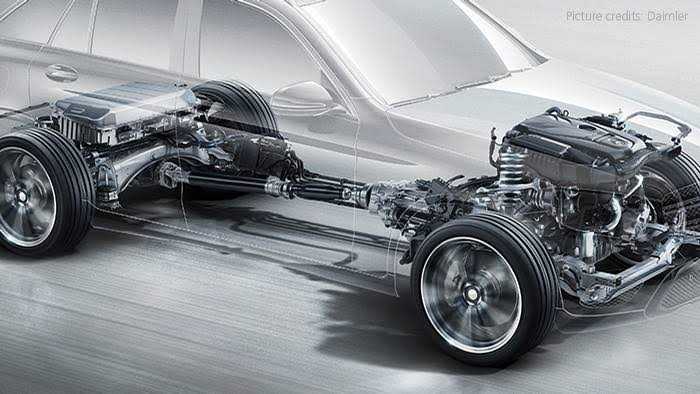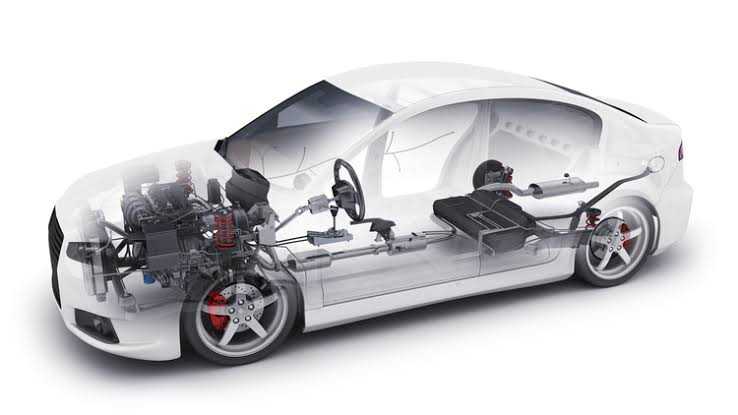When you purchase a new car from a dealership, it often comes with a factory warranty, which typically includes coverage for your vehicle’s powertrain. But what exactly does a powertrain warranty entail, and why is it essential for car owners?
In this guide, we’ll break down everything you need to know about powertrain warranties, from what they cover to how they differ from bumper-to-bumper warranties.
Table of Contents
What is a Powertrain Warranty?
A powertrain warranty is a type of coverage that protects essential components of your vehicle’s powertrain, including the engine, transmission, and oil pump. These parts are vital to the functioning of your car, and having them covered under warranty can provide peace of mind and financial protection in case of unexpected repairs.
what does a powertrain warranty cover
Your powertrain warranty typically covers the following components:
- Engine
- Transmission
- Oil pump, timing chain or pistons
- Transfer case and differentials
- Front- and rear-wheel-drive systems
- Seals and gaskets
- Other internally lubricated parts
These are critical parts of your vehicle’s powertrain, and having them protected can save you from significant out-of-pocket expenses in the event of mechanical failures.
What is Powertrain
Have you ever wondered what makes your car move forward? That’s where the powertrain comes in. It’s a crucial system composed of various parts that work together to propel your vehicle. Let’s take a closer look at the components of a powertrain:
| Component | Description |
|---|---|
| Engine | The heart of the powertrain, generates power |
| Cylinder block | Houses the engine cylinders |
| Driveshafts | Transmit power from the engine to the wheels |
| Transmission | Transfers power from the engine to the wheels |
| Transfer case | Found in all-wheel drive and four-wheel drive vehicles |
| Supercharger | Increases the engine’s air intake for more power |
| Turbocharger | Boosts engine power by compressing air |
| Differentials | Distribute power to the wheels |
Additionally, the powertrain encompasses internal engine components:
- Crankshaft
- Pistons
- Flywheel
- Timing belt and gears
- Gaskets
- Intake and exhaust valves
- Oil pump
- Wheel bearings
For your vehicle to function smoothly, the powertrain must be in top-notch condition. With numerous moving parts, some delicate, it’s essential to maintain it properly. A powertrain warranty can be invaluable if any of these parts malfunction.

Powertrain Warranty vs. Bumper-To-Bumper Warranty
New vehicles usually come with both a powertrain manufacturer’s warranty and a bumper-to-bumper warranty. While the powertrain warranty covers repairs and replacements for powertrain components, the bumper-to-bumper warranty covers most other car components. These warranties are typically separate, providing extended coverage for the powertrain.
When it comes to vehicle service contracts, powertrain and bumper-to-bumper comprehensive warranties are the primary types. However, it’s crucial to understand the differences between them:
| Warranty Type | Description |
|---|---|
| Bumper-to-Bumper Warranty | Comprehensive protection for nearly all vehicle components, with coverage usually lasting 3 years/36,000 miles |
| Powertrain Warranty | Basic coverage for core powertrain components, with longer coverage often lasting 5 years/60,000 miles |
It’s important to note that bumper-to-bumper warranties often have exclusions listed in the coverage details. Therefore, carefully reading the contract’s fine print is essential to understand precisely what is and isn’t covered.
Duration of Coverage
One of the significant advantages of a powertrain warranty is its duration of coverage. Depending on the manufacturer and specific warranty terms, a powertrain warranty can last as long as 10 years or 100,000 miles, providing extended protection beyond the initial purchase of your vehicle.
Cost Considerations
While a powertrain warranty offers valuable coverage, it’s essential to consider the cost associated with obtaining this protection. The price of a powertrain warranty can vary depending on factors such as the vehicle’s make and model, the length of coverage, and the deductible amount. However, compared to the potential expenses of major powertrain repairs, the cost of a warranty can be a worthwhile investment.
Drivetrain Warranty
A drivetrain warranty is a lesser-known option that offers coverage for specific components of the drivetrain system in your vehicle. Unlike powertrain warranties, which provide broader coverage, drivetrain warranties focus solely on parts responsible for delivering power to the driving wheels.
What Does a Drivetrain Warranty Cover?
Drivetrain warranties typically cover the following components:
| Component | Description |
|---|---|
| Rear axle | Transmits power from the differential to wheels |
| Differential | Distributes engine power evenly to wheels |
| Propeller shaft | Transfers power from transmission to the axle |
| Spool | Provides traction in off-road vehicles |
| U-joint | Allows flexibility in the drivetrain |
| Torque converter | Converts engine power into torque |
Duration of Drivetrain Warranty
The duration of a drivetrain warranty varies among manufacturers. While some may offer coverage for 5 years/60,000 miles, others extend it up to 10 years/100,000 miles. Your coverage length depends on factors like the automaker and whether the vehicle is new, certified pre-owned, or used.
Considerations for Extended Coverage
Once your factory warranty expires, you’ll be responsible for repair costs unless you opt for an extended warranty. When considering extended coverage, explore options from both your manufacturer and reputable extended car warranty companies.
Exclusions from Drivetrain Warranty
While drivetrain warranties offer valuable coverage, they do have exclusions. Components not directly linked to the drivetrain system are typically not covered. These include:
- Brakes
- Climate-control system
- High-tech components
- Audio system
- Suspension
- CV joints
Additionally, wear-and-tear parts and damages resulting from accidents or misuse are excluded. This includes items like wiper blades, glass (windshield and mirrors), spark plugs, brake pads, upholstery, and trim.
Maintenance and Misuse
Drivetrain warranties usually do not cover routine maintenance like oil changes and tire rotations. Moreover, failure to adhere to the vehicle’s maintenance schedule or misuse may void the warranty, leaving you responsible for any resulting damages. It’s crucial to follow proper maintenance guidelines to ensure your warranty remains valid.
Powertrain Warranty Comparison
When purchasing a new car, it’s essential to consider the length and coverage of the powertrain warranty offered by different manufacturers. A powertrain warranty provides protection for crucial components like the engine, transmission, and drivetrain. Here’s a comparison of the powertrain warranty terms offered by ten leading automakers:
| Automaker | Powertrain Warranty |
|---|---|
| Hyundai | 10 years/100,000 miles |
| Kia | 10 years/100,000 miles |
| Mitsubishi | 10 years/100,000 miles |
| Genesis | 10 years/100,000 miles |
| Tesla | 8 years/mileage varies |
| Acura | 6 years/70,000 miles |
| Cadillac | 6 years/70,000 miles |
| Lexus | 6 years/70,000 miles |
| Infiniti | 6 years/70,000 miles |
| Lincoln | 6 years/70,000 miles |
As shown above, Hyundai, Kia, Mitsubishi, and Genesis offer exceptional powertrain warranty coverage, with terms extending up to 10 years or 100,000 miles, providing peace of mind for longer durations.
Tesla, while offering innovative electric vehicles, provides an 8-year powertrain warranty with mileage varying by model. Acura, Cadillac, Lexus, Infiniti, and Lincoln offer a competitive 6-year/70,000-mile powertrain warranty, ensuring reliability and durability.
Other manufacturers like Ford, Toyota, and Chevrolet provide powertrain warranties lasting for 5 years/60,000 miles. While these terms are slightly shorter, they still offer significant coverage for essential components.

